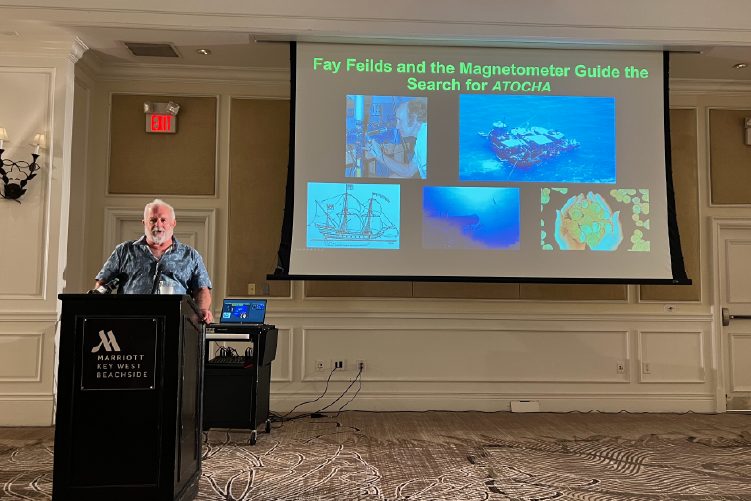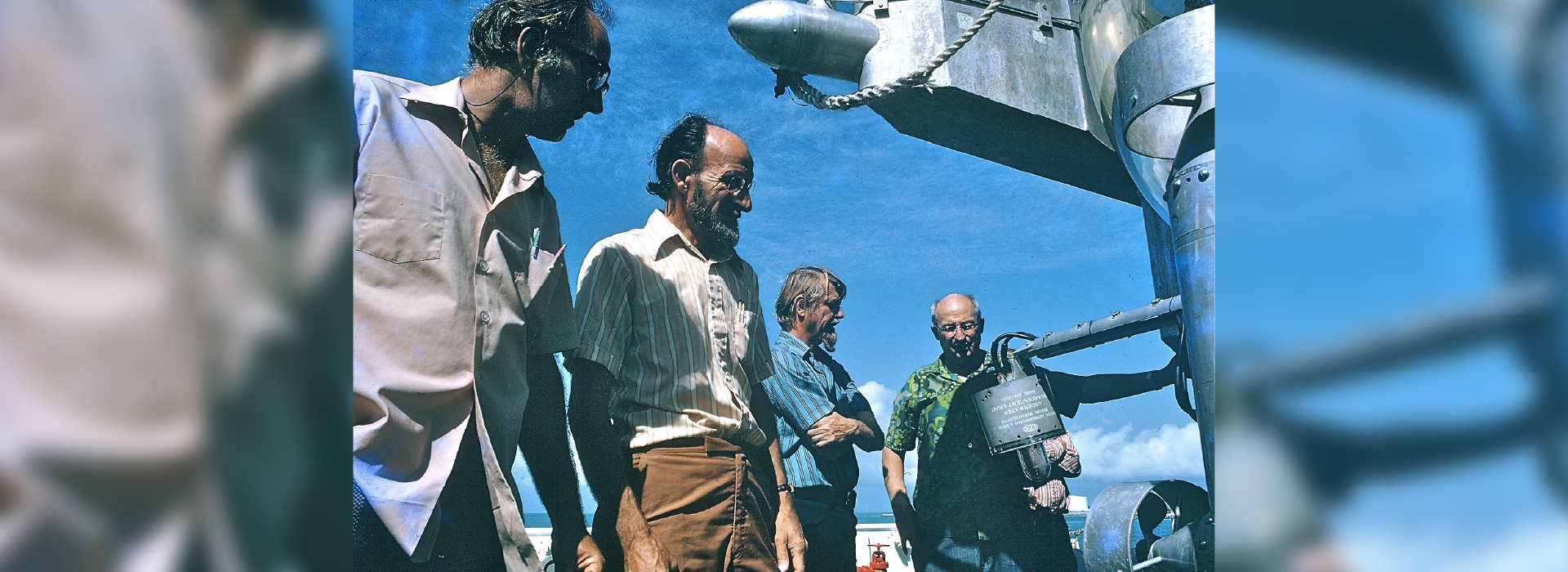
Commemorating the Atocha Shipwreck
FAU Researcher Presents at Commemoration for Historic Shipwreck
By Bethany Augliere
In 1622, the Spanish treasure galleon Nuestra Senora de Atocha sank during a hurricane near the Marquesas Keys west of Key West, Fla. To honor the 400th anniversary of its sinking, along with several other 1622 Fleet ships, a commemoration was held in Key West, which included a presentation by Brian Lapointe, Ph.D., research professor at FAU Harbor Branch.
Lapointe spoke about his 40 years of water quality research and how increasing nitrogen in the water is impacting the health of the coral reefs. He was invited because Mel Fisher, who found the mother lode of the Atocha in 1985 after a 16 year search, was “deeply interested in what’s happening to the water.”
And it turns out, Harbor Branch has an interesting link to the ship’s discovery, said Lapointe. Prior to moving to Key West, Fisher lived in Vero Beach, Fla., and employed a man named Fay Feilds. “Fay actually built the magnetometer that helped find the mother lode, and it's debatable that without that instrument, they may never have found it,” Lapointe said. Feilds also worked with Ed Link and engineers at Harbor Branch developing the remotely operated vehicle (ROV) that was used with the Johnson-Sea-Link submersibles.
“I was living in the Keys when they found the Atocha in the summer of 1985,” Lapointe said. “It was a pretty amazing time, and it’s now considered the most significant shipwreck find of the 20th century.”
If you would like more information, please contact us at dorcommunications@fau.edu.
